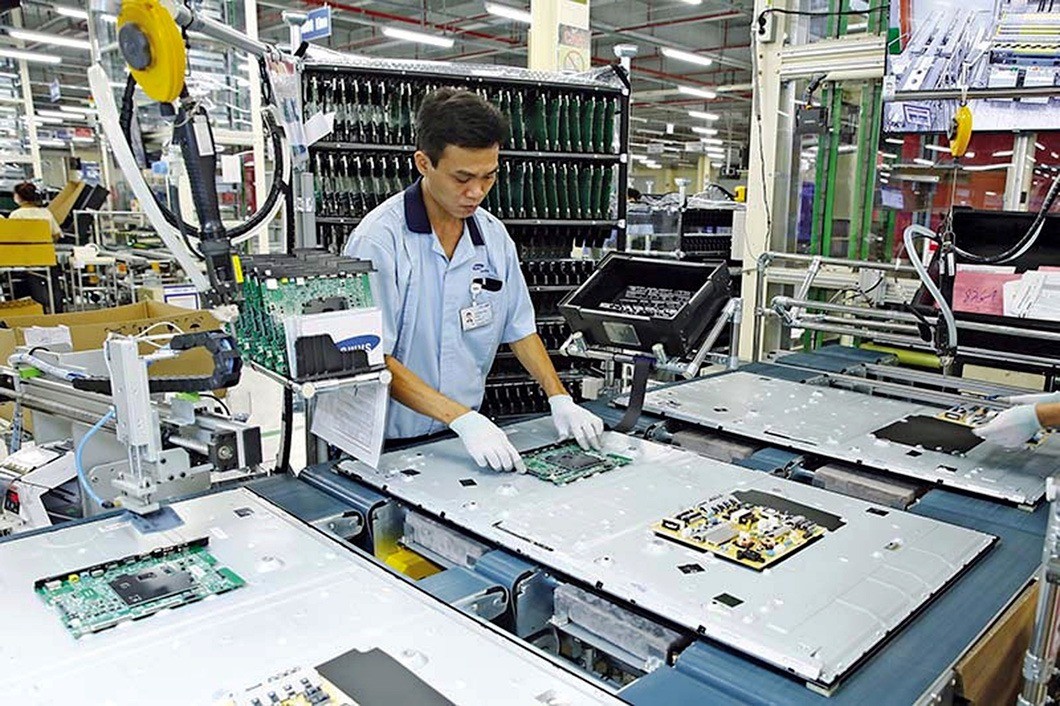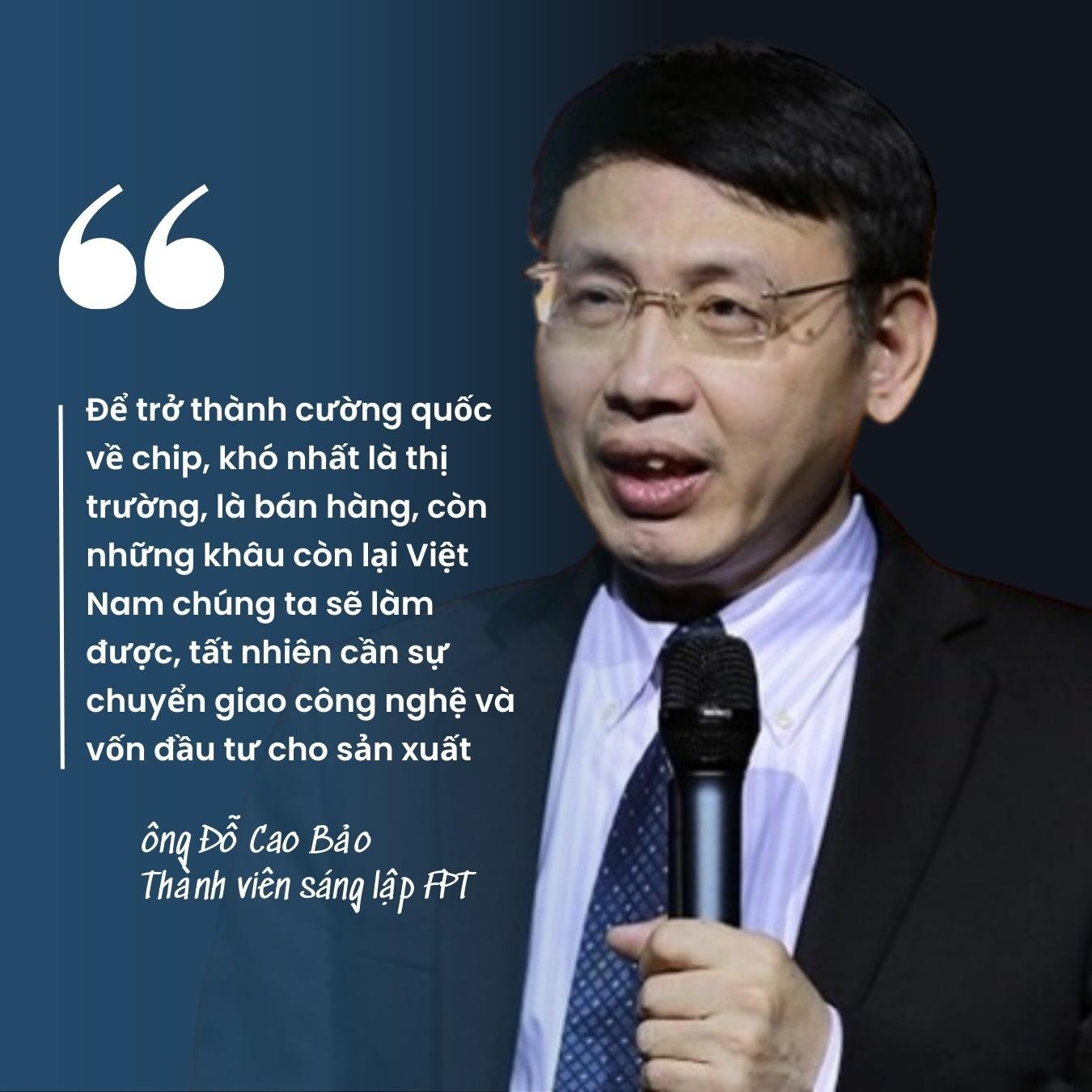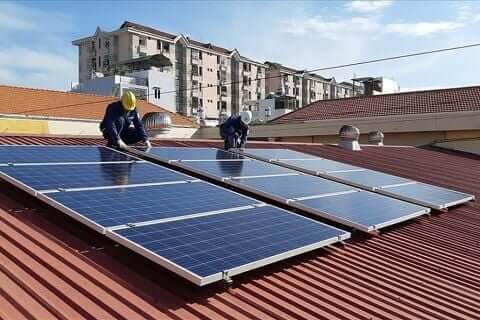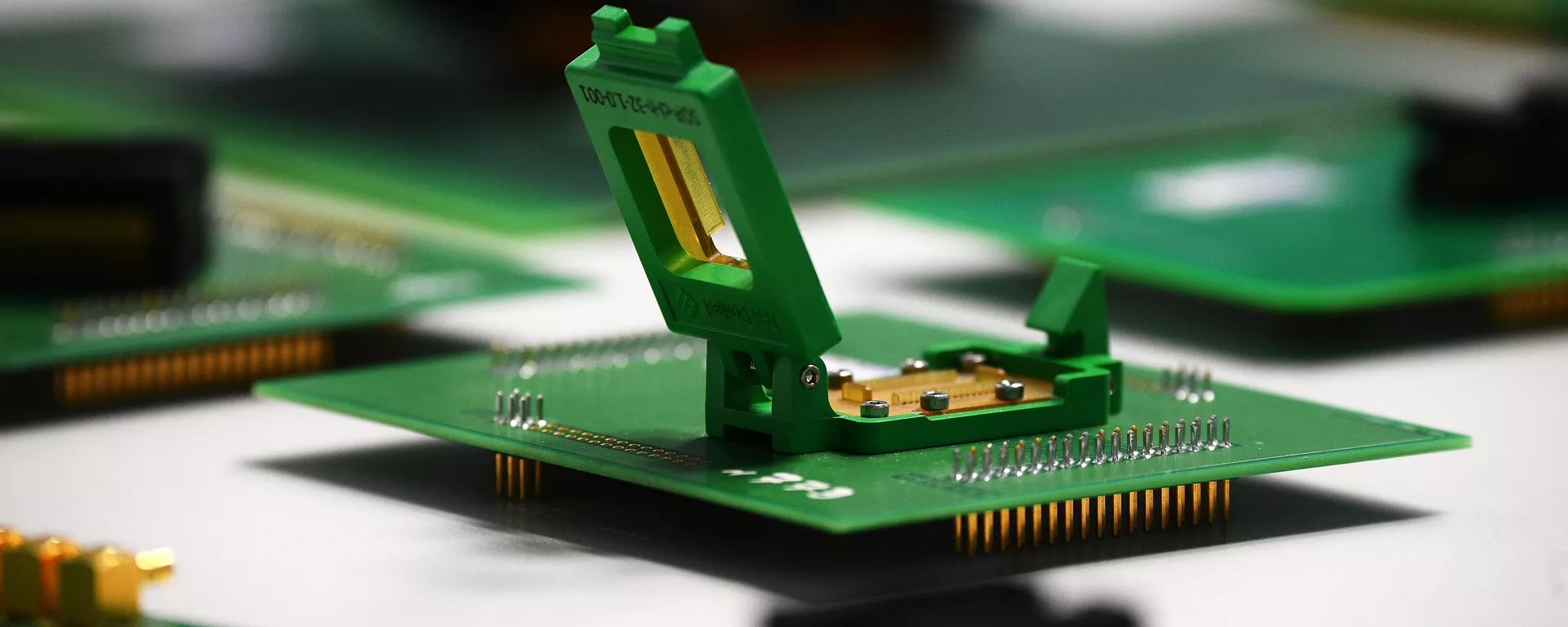VietTimes – Vietnam is facing the opportunity to become a chip manufacturing and exporting powerhouse in the next decade. But can Vietnam seize this opportunity? What advantages and disadvantages await?
This afternoon, September 10, President Joe Biden paid an official visit to Vietnam at the invitation of General Secretary Nguyen Phu Trong.
In the announcement about President Biden’s trip, the White House said that Mr. Biden and Vietnamese leaders will “seek opportunities to promote growth for Vietnam’s technology- and innovation-focused economy.” The United States supports and wants Vietnam to become a leading semiconductor manufacturing and exporting country in the region and the world in the next decade.
This was also stated by Ms. Janet Yellen – US Treasury Secretary – during her visit to Vietnam in July. Ms. Yellen said that over the past decade Vietnam has emerged as an important node in the global semiconductor supply chain.
Ms. Yellen said the United States is pursuing an approach called “friendshoring” to build a safe and reliable supply chain. The aim is to reduce the US economy’s vulnerability to fluctuations in the supply of key goods, such as semiconductors.
In addition to promoting the domestic semiconductor industry through the Science and Chip Act that President Biden signed in August 2022, the United States also seeks friendly countries to support the semiconductor manufacturing industry. to diversify supply sources.
Semiconductor chips are an extremely important commodity today. It is present in every device from cars, airplanes, phones to computers, televisions, and refrigerators. It is also used in military defense equipment to protect national sovereignty.
A statistic in 2022 shows that the number of chips shipped in 2021 worldwide is 1.1 billion, with sales reaching 595 billion USD. With this figure of nearly 600 billion USD, the scale of the semiconductor chip market is 5 times larger than the global television market, 6 times larger than the missile and nuclear bomb market, and 15 times larger than the robot market.

CEOs of leading US semiconductor and digital companies are expected to attend a meeting on Monday (September 11) in Hanoi as part of President Joe Biden’s visit to Vietnam.
According to a list revealed by Reuters, the CEOs of Google, Intel, Amkor, Marvell, and GlobalFoundries will be present at this meeting. Secretary of State Anthony Blinken will also attend along with top Vietnamese officials.
Before this meeting, a number of US semiconductor companies had begun to set foot in Vietnam. Intel has a $1.5 billion factory in southern Vietnam that assembles, packages and tests chips and is continuing to plan to expand this factory. Amkor Technology is building “a large modern factory to assemble and test semiconductors” in a locality near Hanoi – according to Treasury Secretary Janet Yellen during a visit to Vietnam in July. Chip design company Marvell said it plans to build a “world-class” center in Vietnam.
Assembly and design are segments where US officials think Vietnam can develop faster. It is unclear in the coming period that the United States will support Vietnam in strengthening capacity at any stage in the chip production chain, including design, semiconductor production on wafers, testing and packaging.

According to Bloomberg statistics, in the first 7 months of 2023, the number of chips from Vietnam accounts for 10% of the total chips imported into the US. In February alone, chip sales from Vietnam imported into the US reached 562.5 million USD, an increase of about 240.8 million USD over the same period in 2022. In terms of sales, Vietnam ranks third in Asia after Taiwan and Malaysia in exporting chips to the US. However, the majority of exported chips are from FDI enterprises such as Samsung, Intel, Foxconn…
According to Reuters, the shortage of chip engineers, including hardware and software engineers, can create many challenges for Vietnam to become an important country in the chip supply chain. Mr. Vu Tu Thanh, Deputy Executive Director, US-ASEAN Business Council shared that Vietnam only has about 5,000 to 6,000 engineers trained for the chip field, compared to the need of about 20,000 engineers for 5 years. next year and 50,000 engineers for the next 10 years.
While creating a chip product includes many processes, Vietnamese businesses can only undertake the design and testing stages. Important stages such as production and export are still undertaken by FDI enterprises. Most of the revenue falls into the hands of these businesses.

There are also not many supporting industrial enterprises, making it difficult to establish a domestic supply chain for chip production. The amount of funding for research and development in Vietnamese businesses is not much. The issue of training human resources to meet the needs of the chip manufacturing industry is becoming very urgent – this is a problem for universities and training facilities in the country.
Recently, some South Asian and Southeast Asian countries are also investing heavily in the semiconductor field, such as India, Malaysia, Thailand and even Cambodia.
Malaysia has turned Penang technology park into Asia’s Silicon Valley. In 2022, Malaysia’s semiconductor and electronics industry became the leading growth industry. This country has approved 94 investment projects with a total value of more than 37 billion USD. More than 5% of semiconductor chips sold globally in recent years belong to Malaysia.

In an interview with VietTimes, Mr. Do Cao Bao – a member of the Board of Directors and a co-founder of FPT Group – shared that the Vietnamese chip industry is still very small, just at the start-up stage. Currently, mainly Vietnamese enterprises participate in design and testing, there are a few small chip factories of FDI enterprises.
However, according to Mr. Do Cao Bao, currently FPT has mastered the design, testing, packaging and commercial (direct sales) stages, and for production, it hires a Korean factory.
Faced with concerns about the shortage of human resources, Mr. Do Cao Bao commented that if there is a large enough market and orders from foreign markets, especially from developed countries, Vietnam will train promptly. and supply enough according to demand.
“I remember back in 1988-2000, when FPT started exporting software, software human resources were as few and lacking as today’s chip human resources. FPT established FPT University to directly train software human resources for exporting. own software distribution and for the whole market. Following FPT, other universities also joined in and currently Vietnam has hundreds of thousands of software human resources. The same goes for chip human resources. FPT University has already established a semiconductor chip department. Believe in the dynamism, creativity and ability of Vietnamese people to learn new technologies“, Mr. Do Cao Bao said.

When a VietTimes reporter asked whether Vietnam in the next decade could become the world’s leading chip manufacturing and exporting country, Mr. Do Cao Bao said that the most difficult problem is the market and sales.
“If the United States and other chip powers in the world have a strategy to move chip production to Vietnam, I believe that in the next 10 years, Vietnam can completely become a strong country in the field of semiconductor chips, with important role in the field of chip design, testing and manufacturing. I repeat that the most difficult thing is the market and sales, but we can do the remaining steps in Vietnam, of course we need technology transfer and investment capital for production.“, Mr. Bao emphasized.
Quoted on Reuters, Mr. Hung Nguyen – Senior Program Director of Supply Chain at RMIT Vietnam University – said that Vietnam also has a huge advantage to attract US investment, which is reserves. rare earths – a source of raw materials for chip production. It is estimated that Vietnam has the second largest rare earth reserves in the world after China.
Just ahead of President Biden’s visit to Vietnam, the White House said in a statement that President Biden plans to discuss with Vietnamese leaders high-tech workforce development programs, including can expand existing human resource training initiatives./.









